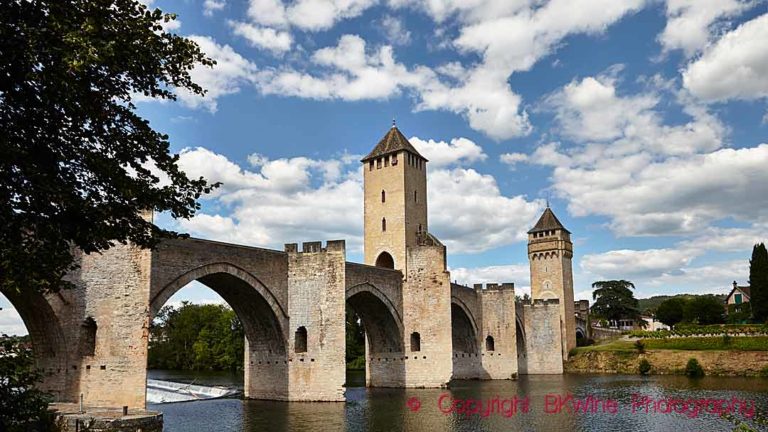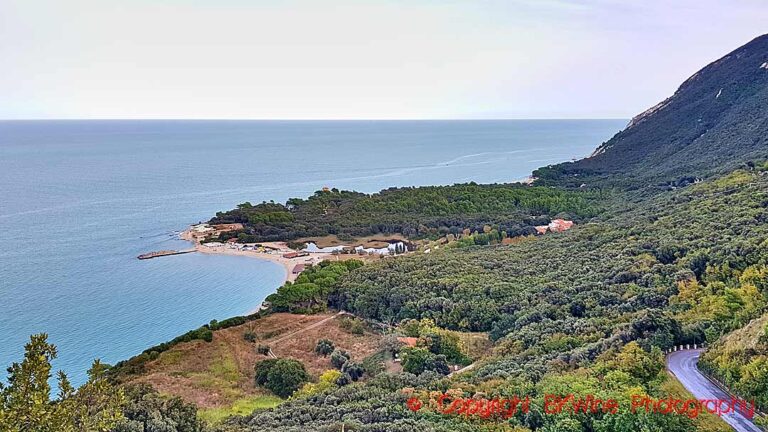Entre-deux-Mers is a huge piece of land that spreads out like a triangle between the rivers Garonne and Dordogne. For many, the area becomes only a transport route to get from Médoc to Saint-Emilion. This is a shame. Entre-deux-Mers deserves that you stop, not only for the sake of the green and rolling landscape that beats the flat and boring Medoc and Graves hands down in terms of sheer beauty.
Wines have also become better and better and equipped it with a little patience you will find your way to some real bargains. There are more than 20 different appellations, of a total of around 60 in the whole of Bordeaux. And there are many, many chateaux… One can also get a dash of French history at the same time when visiting the small, picturesque medieval villages that are dotted around the beautiful landscape.
AOP Bordeaux
All types of wine are made in the Entre-deux-Mers region. This is perhaps not so surprising given that this is a mosaic of different soil types: sand, gravel, clay, silica, etc. In addition there are differences in altitude like nowehere else in Bordeaux. The vines grow on more or less steep slopes.
Here you can find obscure appellations like Graves-de-Vayres and Haut-Benauge that few people are familiar with, but this also region where most of the wine sold under the appellations Bordeaux and Bordeaux Supérieur is made. These wines can in theory be made anywhere in the whole of Bordeaux. In practice they are made on about half of the total area, ie on around 50 000 hectares, of which most is in the Entre-deux-Mers area.
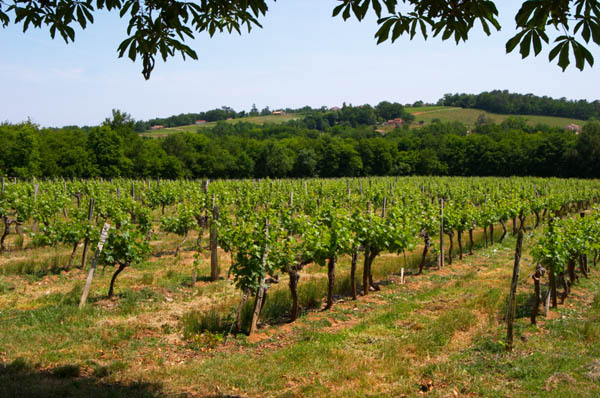
AOP Entre-deux-Mers
But perhaps I hear some protests, saying that Entre-deux-Mers is an appellation. That is also correct, but as an appellation Entre deux Mers is rather small because it is produced from just under 2 500 hectares. But it is an important appellation since it generates a lot of name recognition for the region.
Entre-deux-Mers as an appellation has always only applied to white wines. Until the mid-1950s these white wines were primarily sweet and semi-sweet and the quality was not always very good. This was probably one of the things that generated the bad reputation that white Bordeaux wines have been stuck with for a long time. (Today very undeservedly.)
In 1953 the wine producers themselves asked that the appellation should be changed to apply for dry wines. This came into force in 1974. In the meantime, many farmers pulled up their Sauvignon Blanc and Sémillon vines and planted red grapes in instead in order to earn better money by producing Bordeaux Rouge.
But in the 80’s a new style of Entre-deux-Mers wines developed: dry, fresh and fruity wines with very little, or for the most part, no oak aging at all.
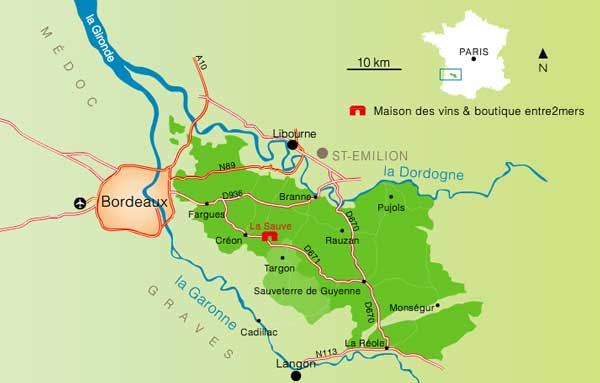
One must have unique selling points
Most wine in the Entre-deux-Mers region today is red, and this is only entitled to the appellation Bordeaux or Bordeaux Supérieur. This latter requires 0.5% higher alcohol content and a slightly lower yield. An astounding 40 million cases are produced annually of these wines (mostly red and some white), almost as much as the all of the Australian production!
It is precisely these “generic” Bordeaux wines that today has fallen into something of a crisis. The quality is sometimes under critique and the chateaux feel that it is difficult to be different, to get noticed. As Gérard Neraudau at Château Jonqueyre, a chateaux in the middle of the Entre-deux-Mers, said: We have to invest in quality and in marketing and ensure that one’s chateau becomes well-known and that it stand out in some way. Jonqueyre makes a good Pomerol-like wine with 90% merlot at a fraction of what a good Pomerol costs.
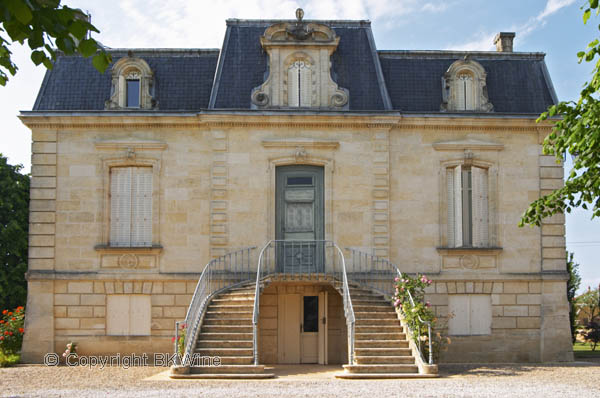
As I said initially the Entre-deux-Mers region has several different appellations. The narrow strip along the Garonne, from Bordeaux down to Langon, was previously called Premières Côtes de Bordeaux but is now included in the new appellation Côtes de Bordeaux, created in 2009.
Côtes de Bordeaux was created as a common name for what was previously called Premières Côtes de Bordeaux (Cadillac), Côtes de Blaye, Côtes des Francs and Côtes de Castillon. All these are now sold as Côtes de Bordeaux, usually with the name of the commune added at the end.
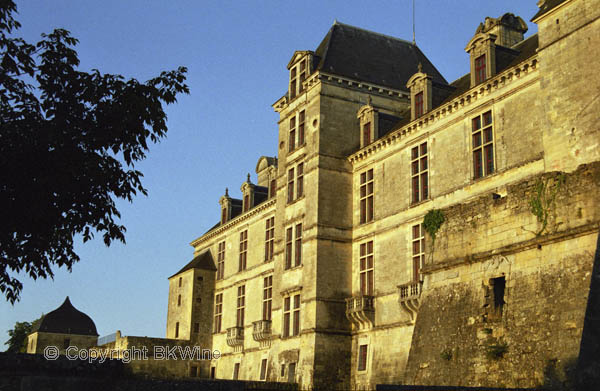
There is a series of small enclaves in what was once the Premières Côtes de Bordeaux along the river; the three sweet wine districts of Cadillac, Loupiac and Sainte-Croix-du-Mont. The vines grow here on very steep slopes and at the top you have a breath-taking view of their prestigious neighbour on the other side of the river, the Sauternes. These districts, at least the latter two, Loupiac and Ste Croix du Mont, are a great alternative to the more expensive Sauternes wines (Cadillac has a very small production and is difficult to find, and it is now part of the Cotes de Bordeaux). If you do not want to spend too much money, it is better to buy a good quality Sainte-Croix-du-Mont or Loupiac rather than a cheap Sauternes skimping on quality.
Cadillac (no connection to the car even if the founder was actually a Frenchman, but from the Loire) is a beautiful medieval town, a bastide as they are called in this region, founded in the 13th century, as were many of the other bastides here. There are a number of them in Entre-deux-Mers: Creon, Sauveterre-de-Guyenne, Saint-Macaire et al. They all have the typical main square surrounded by beautiful arcades.
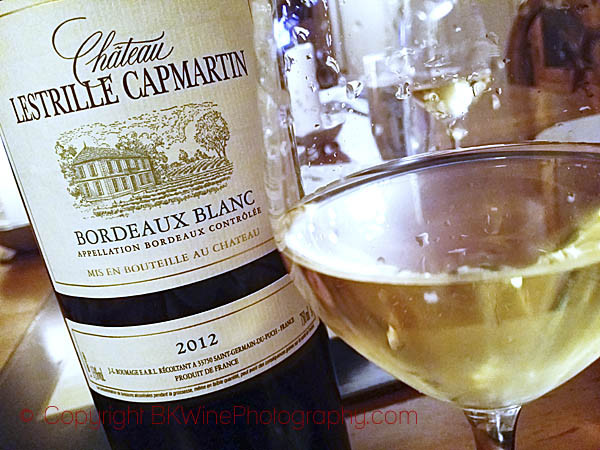
In the very eastern corner of the Entre-deux-Mers, we also have the easternmost Bordeaux appellation, Sainte-Foy-Bordeaux. It is a nice city, also a bastide and they make some interesting wine, not least the largest private grower, Chateau Hosten-Picant. The owners, Yves and Nadine Picant, left the cooperative in 1986, and have succeeded very well with both their red and white wine. Saint Foy is now also on the way to integrate into the côtes, Les Côtes de Bordeaux, and thereby become number 5 in the group.
Bordeaux Clairet
A wine that has become increasingly popular in recent years, thanks to the wave of popularity that rosé wines are riding, is Bordeaux Clairet. According to Loïc de Roquefeuil at Chateau Castelneau, an impressive castle in the Entre-deux-Mers, this is the original Bordeaux wine as it was drunk before the revolution: light-coloured, light-bodied and elegant. “Light-coloured ” assuming one compares it with a red wine, but certainly deep-coloured for a rosé, which is what it is categorized as today.
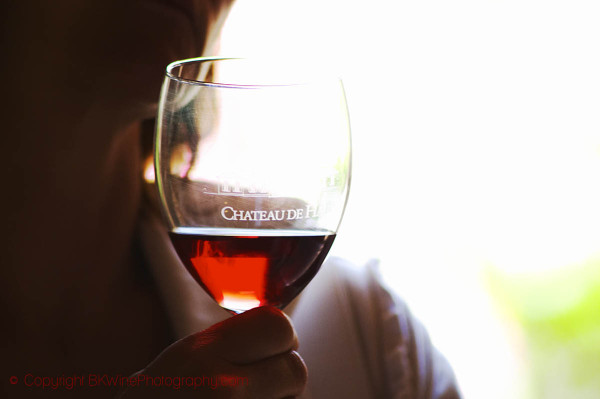
Today it is considered as a perfect summer wine and has become quite popular both on its home market in Bordeaux and on the export market. Clairet can be described as a full-bodied rosé. The must is cooled down and the skins are left to macerate for a few days (maceration à froid) to get the desired colour, and then fermentation is done like for a white wine. Much of Bordeaux Clairet is made here in the Entre-deux-Mers.
[box type=”info” style=”rounded” border=”full”]One of the very exciting things to discover in Bordeaux is the fantastic range of wines and chateau that exist here. It is not only the small handful of famous chateaux that are sold like international brands. Join BKWine on a wine tour to Bordeaux and you will experience both the grand chateau and the small family wine producers.
Travel to the world’s wine regions with the experts on wine and the specialist on wine tours.
Wine tours with BKWine; unique wine tours.[/box]




